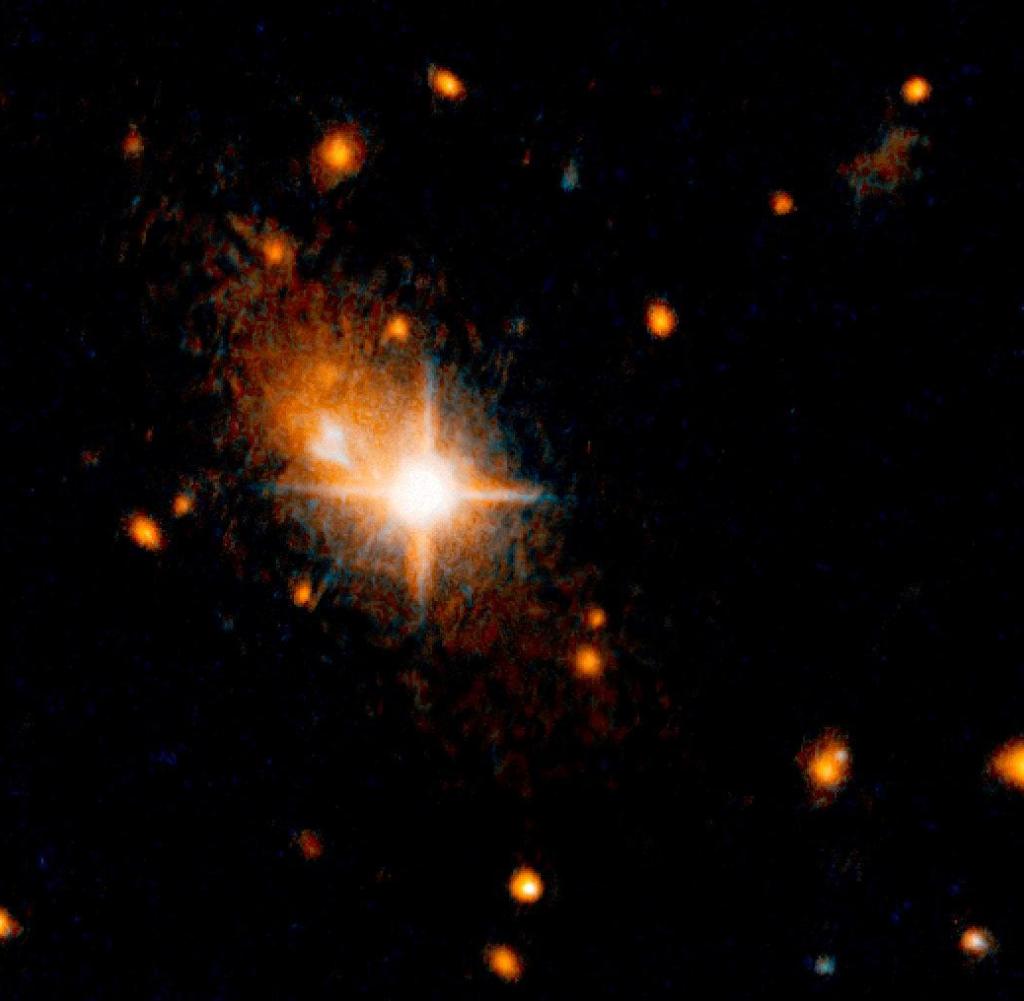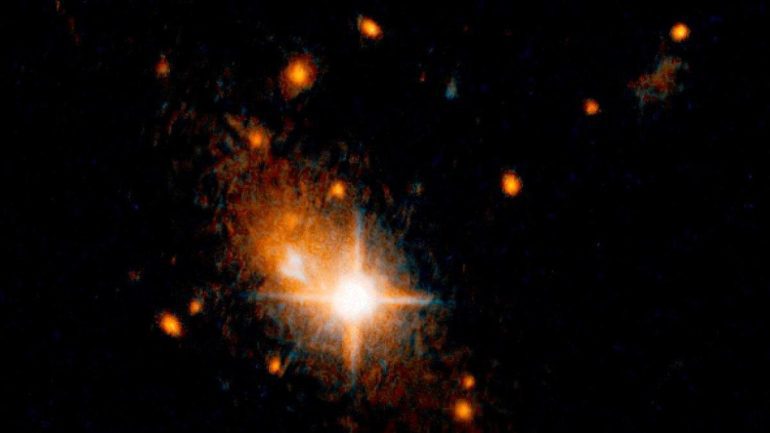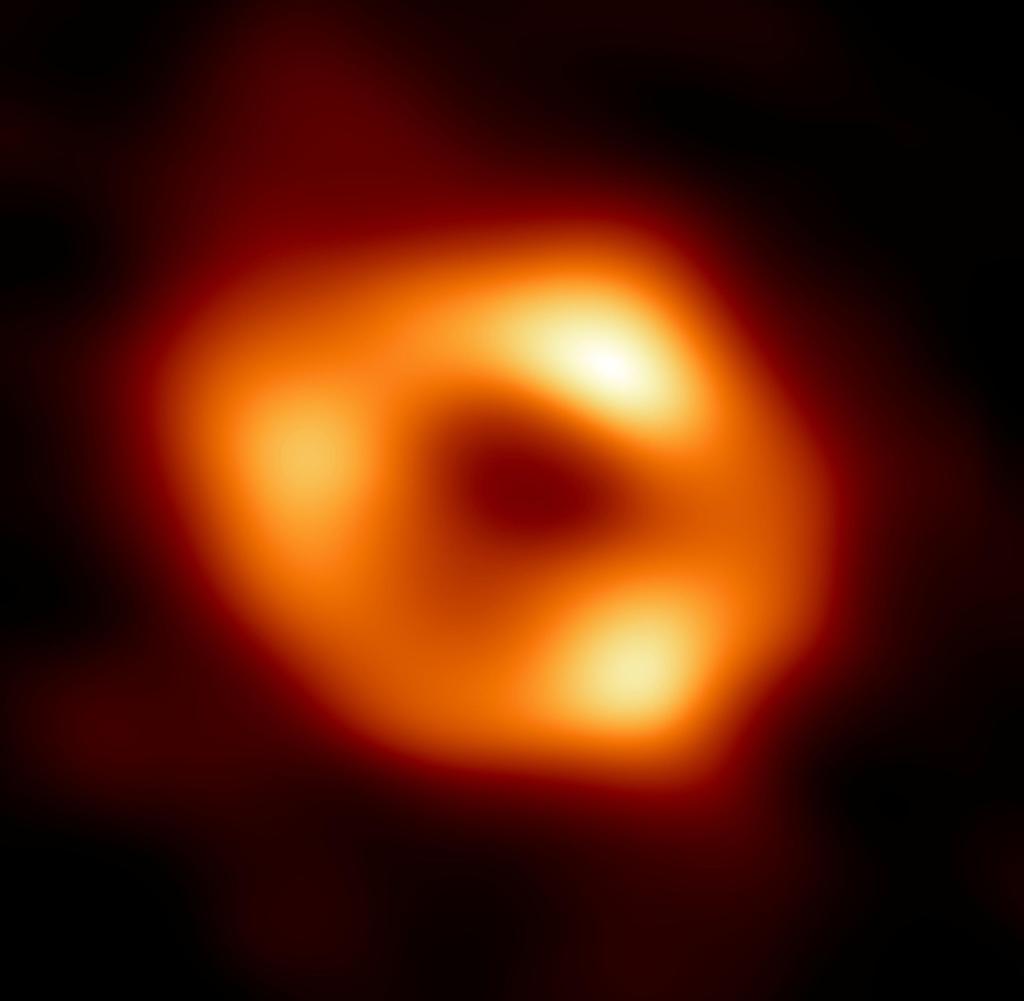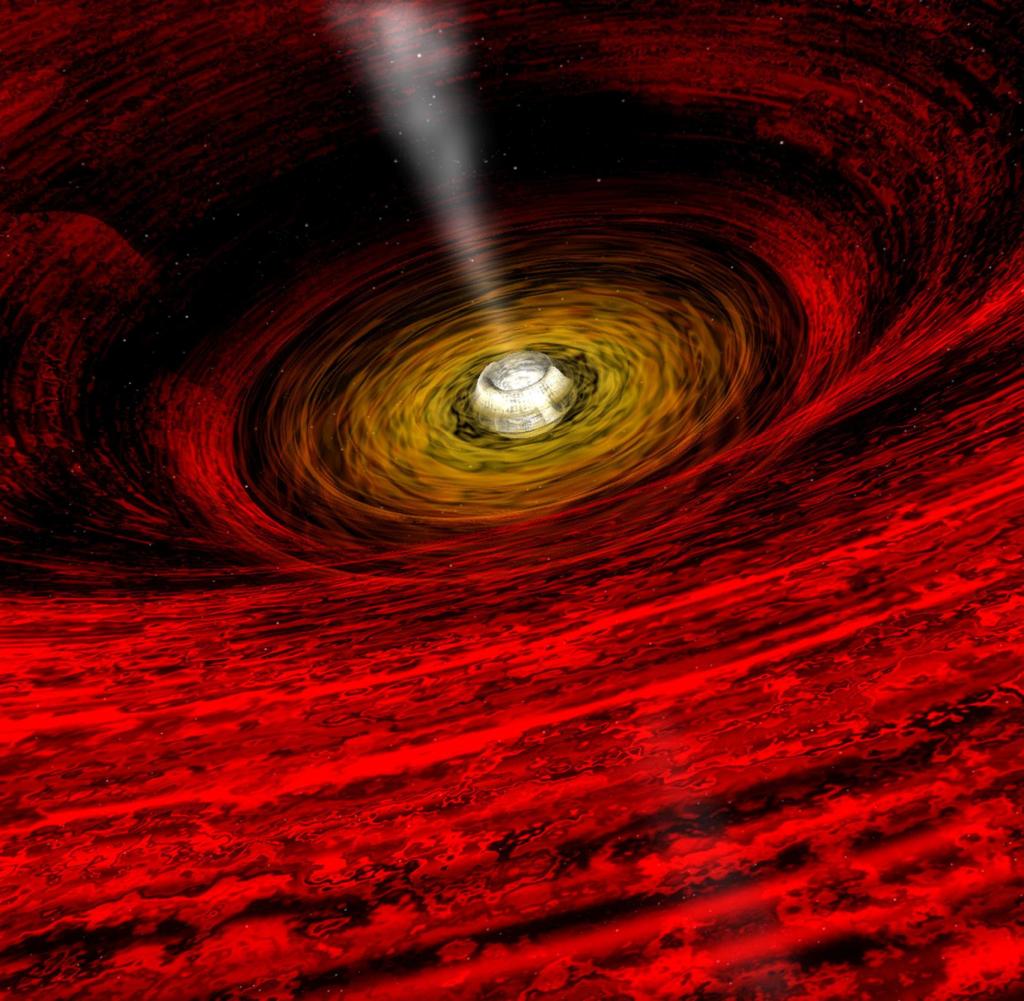Mystery of supermassive black hole solved


A bright, star-like quasar visible from its host galaxy
Source: Image Alliance/Hubble Space Telescope/ESA/Hubble/DPA
Quasars are huge black holes with high brightness. How they formed in the early days of the universe has always puzzled astronomers. Now they have got an explanation. Cold gases play an important role here.
bAbout a billion years after the Big Bang, the first quasars in the universe ignited – supermassive black holes at the centers of newly formed galaxies. But from an astronomical point of view, how can such massive bodies of a billion solar masses have been produced in such a short period of time?
An international team of researchers has now found an answer to this question with the help of computer simulations: Streams of cold, turbulent gas condensed to form the first black hole of one million to one million solar masses. These objects then serve as the “seeds” for the formation of supermassive black holes, the scientists write. In the magazine “Nature”,
In today’s universe, nearly every galaxy has a massive black hole at its center, millions to billions of times the mass of our Sun. At first, astronomers thought that these supermassive black holes would increase in mass more or less uniformly throughout cosmic history. However, this assumption had to be corrected when several quasars were found in the early universe. They are also supermassive black holes in which matter flows and heats up in the process – which is why quasars shine brighter than the galaxies in whose center they are located.
“Cosmological simulations have shown that these quasars may have formed by cold gas flows,” explained Muhammad Latif of the University of the United Arab Emirates and his colleagues from Austria, Great Britain and Canada. “But the condition for this is that black holes with a mass of one to one million solar masses already exist. So far, however, no conclusive explanation has been found for their formation.”
Although unusual scenarios may lead to the formation of these “seeds” for supermassive black holes – too little to explain the frequency of quasars in the young universe.
Latif and his colleagues have now succeeded in using high-resolution computer simulations to find an explanation for the formation of the first black hole. As the scientists report, galaxies forming in the young universe cause intense turbulence from the flow of cold gas – and this turbulence prevents stars from forming from gas in the normal way.
Only when the mass of the accumulated cold gas increases to 30,000 to 40,000 solar masses, does the dense gas cloud collapse under its own gravity and form a massive black hole.
According to Latif and his colleagues, this simple, robust process ensures that a “seed” can initially form wherever there is enough gas for the quasar to form. And this process is often enough to explain the number of quasars. “The first quasars were therefore a natural consequence of the formation of structures in the early universe,” say the researchers, “and did not require exotic, finely tuned environments, as previously thought.”

Internet fan. Alcohol expert. Beer ninja. Organizer. Certified tv specialist. Explorer. Social media nerd.








